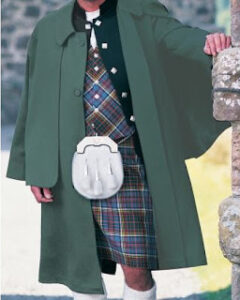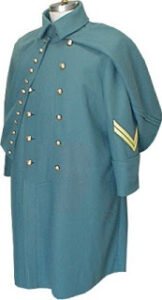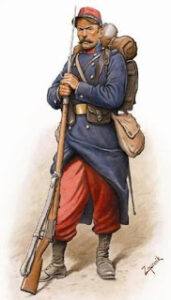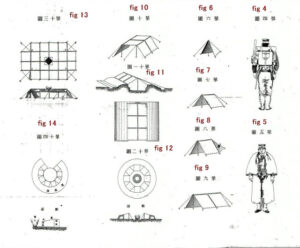Many moons ago I described a method of turning an item such as an all-weather blanket into a hooded rain cape. This was adapted from a method of wearing a plaid associated with the Inverness area. An Inverness cape or cloak is something different and today I will describe a way to use a blanket that forms something not unlike an Inverness cape. We touched on this method with the recent post on Japanese shelter cloths.

Take one corner of a blanket in each hand and hold it behind you. Place the middle of the side between your hands over your head.
Release the corners and reach down to waist level and gather the blanket around your lower body. Adjust so the lower edge is about mid-calf level or your preferred length. Tie the blanket in place by encircling it with a belt, piece of string or anything similar you have handy.
Fold the cloth over your head back so it forms a collar. The garment can be improved by using a blanket pin to close the throat area. If you are really improvising you can make a pin by sharpening a small stick.

Your blanket now resembles an improvised cloak. It also resembles the greatcoats worn by US soldiers in westerns. The upper section allows good access to your chest pockets or other gear carried in this area. If necessary it can be drawn up over the head to form a cowl. If your legs need more freedom of movement the lower corners can be brought up and tucked through the belt. Military greatcoats were often designed so the skirts could be buttoned up in similar fashion. This is sometimes called “French fashion” since French troops were noted for fighting in their greatcoats.

You can modify a blanket so that it can more easily be worn in this fashion. Sew a cloth tape by its middle to the middle of the blanket at your preferred waist level. If you refer back to the Japanese shelter cloth article you will see the cloth included this feature. To close off the neck the best option is one or more hook and loop fastenings. Loops should be cord and blunt hooks can be made from suitably bent paperclips or other wire. Hook and loop fastenings are less likely to be uncomfortable should you happen to be lying on them when the blanket if used for sleeping in. Even if you use a sleeping bag for sleeping a blanket is a handy thing to have should it turn unexpectedly cold. Using this technique the blanket is a day garment too. You can wear a rucksac while wearing a blanket like this. The front tends to open more which may or may not be a problem. If you do not need the ventilation when carrying a load a couple of extra blanket pins or a blanket scarf can be used. If your pack is small the cloak can be put on over it.

I have described this as being with a blanket but as the Japanese shelter cloth shows us this can also be used with a rain-resistant material. If you carry a rifle and ammunition across your chest the upper “flaps” provide good protection and easy access. Unlike a poncho this rain garment does not need a hole in the centre for a hood, so is less problematic if rigged as a shelter. A separate hood could perhaps be attached near one edge near the neck fastenings if you are modify a cloth for use in this fashion. If the weather is particularly foul a blanket can be worn within a rain cloth.